feature image © Nick Dale – stock.adobe.com
Deciding on the best time to visit Tanzania isn’t easy.
The country has an embarrassment of natural riches and a plethora of options and adventures to bring to the safari table.
From Kilimanjaro to the Great Migration, through Serengeti and Ngorongoro Crater and all the way to Zanzibar in the Indian ocean… it isn’t so much a question of deciding when the best time to visit Tanzania will be as deciding which of the many Tanzanian highlights to include on your Tanzania safari.
The very short guide to the Tanzanian climate:
- There is little to no rain between June and October.
- The short rains fall in November and December.
- The short dry season happens during January and February.
- The Tanzanian wet season reaches its peak during March and April.
- May is still technically in the wet season but the weather is heading for the dry season.
(Please note that Rothschild Safaris can’t accurately predict the weather or the wildlife of East Africa. All the information in this guide is based on decades of experience but always subject to the mysterious whims of Mother Nature.)
Notes for Travelers who Love Action
- The northern circuit, including Serengeti National Park, delivers the Great Wildebeest Migration and the high concentration of predators who dine on the plains game along their way. Ngorongoro Crater and Lake Manyara are also located in the bustling northern part of the country.
- The dry season runs from late June to October but the northern circuit can be visited throughout the year.
- For the best Great Wildebeest Migration action, the best time to visit Tanzania is during June and July.
- Great Wildebeest calving takes place during late January and into February.
- High Season starts in July and continues to March. It can be quite busy in northern Tanzania then.
- The short Low Season is April and May but the north remains busy!
- Zanzibar offers a cultural deep dive and glorious beaches. Visit Zanzibar during the cool, dry months of spring between June and October, or plan to see Zanzibar between December and February when you can expect hot and dry conditions.
Notes for Travelers who Enjoy Exclusivity
- In the south, we are in ‘road less traveled’ territory with Ruaha National Park and the Selous Game Reserve.
- The chimpanzees live in the Mahale Mountains to the west, close to the very remote Katavi Park.
- The best time to visit the south and west of Tanzania is during the dry season between June and October.
- The High Season is from July to October here, but the southern and western circuits are never very crowded.
- Low Season is in April and May when many lodges in the south and west close down.
- Pemba and Mafia island are incredible diving destinations.
The cool and dry months from July to October and the humid and hot but dry months of January and February are great picks if you plan to include a diving holiday.
Tanzania Month By Month
The Dry Season
Historically the height of the wildebeest migration in Tanzania, June, and July brings spectacular scenes of one of the natural world’s wonders.
If you are all about the river crossings in the north then August and September will offer the best chance to see the dramatic dash.
With little to no rain the mosquitos are missing in action, skies are clear but early mornings and late nights can be very chilly.
By June the Great Migration is committed to the western corridor and the rutting season is well underway in the Grumeti area. The northern parks of Tanzania enjoy the last moment of relative peace from safari-goers. Peak season has not yet arrived towards the south and west of the country either as the roads are drying out and camps are opening.
During the green season, the lush bush can make spotting game a little more challenging.
Expect Tanzania weather to run temperatures between 84 and 46oF (29 and 8oC).

Our recommendations for June
- REASONABLE – Katavi National Park
- WONDERFUL – Gombe National Park — Tarangire
- EXCEPTIONAL – Ngorongoro Crater — Lake Manyara — Selous — Serengeti — Ruaha
At the start of the peak season humidity is low. The first river crossings may take place in the northern Serengeti and huge herds of elephant gather in Tarangire. This is a great time of year to consider the Selous, Katavi, and Ruaha for a far more rustic and exclusive safari.
Off the coast, incredible technical diving opportunities await in Pemba island. Divers of all levels will love this Indian Ocean island but experienced divers will particularly enjoy the island’s currents and vertical walls… as long as they don’t mind sharing the water with manta and eagle rays of course 😊.
Expect Tanzania weather to run temperatures between 84 and 46oF (29 and 8oC).
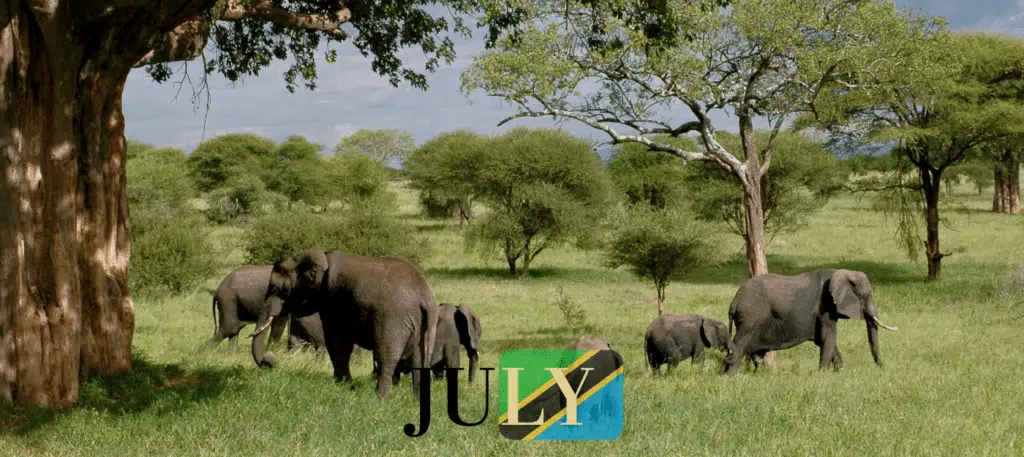
Our recommendations for July
- WONDERFUL – Katavi National Park
- EXCEPTIONAL – Gombe National Park — Tarangire — Ngorongoro Crater — Lake Manyara — Selous — Serengeti — Ruaha — Zanzibar
Spectacular river crossings may now be a daily diary entry in the Lamai/ Kogatende areas and across the Mara River. The elephant migration of Tarangire is also at its peak. The southern parts of the country continue to offer “off the beaten track” safaris.
Animal behavior is fairly predictable as the bush becomes dry and the wildlife gravitates towards water sources. This makes game spotting much easier.
During August there is another migration that should be considered as great numbers of visitors arrive from America and Europe to take advantage of the marvelous weather and huge concentrations of wildlife. There may also be some wind and wild-fires with hazy conditions but there is no denying the sensational wildlife on full display.
Expect Tanzania weather to run temperatures between 84 and 46oF (29 and 8oC).

Our recommendations for August
EXCEPTIONAL – Katavi National Park — Gombe National Park — Tarangire — Ngorongoro Crater — Lake Manyara — Selous — Serengeti — Ruaha — Zanzibar
Fewer fellow safari-goers and no rain is as welcome as low humidity levels and the noticeable lack of mosquitoes in September. The migration action is now very much focused on the Mara River as columns of wildebeest and zebra cross in both directions to secure the best grazing.
This is the best month to climb Kilimanjaro and if you have packed your sense of adventure it is a good time to avoid the crowds and escape to the southern safari circuit. It is also the start of the fishing season for anyone planning a visit to Tanzania’s great lake regions.
Expect Tanzania weather to run temperatures between 84 and 46oF (30 and 8oC).

Our recommendations for September
EXCEPTIONAL – Katavi National Park — Gombe National Park — Tarangire — Ngorongoro Crater — Lake Manyara — Selous — Serengeti — Ruaha
It has to be said that Tanzania does October with a lot more elan and a lot less talk of “suicide month” than southern Africa! How convenient to have great game viewing without the extreme temperatures during peak season.
Tarangire’s elephant herds are now at their peak and the Great Migration herds begin to cross back into Tanzania in the Serengeti. High game volumes and low visitor numbers make Ruaha and Katavi an especially clever authentic, safari destination.
Expect Tanzania weather to run temperaturesbetween 88 and 48oF (31 and 9oC).

Our recommendations for OCTOBER
EXCEPTIONAL – Katavi National Park — Gombe National Park — Tarangire — Ngorongoro Crater — Lake Manyara — Selous — Serengeti — Ruaha
The Wet Season
Expect lower rates, fewer people and a very lush, green bush.
See the calves being born during January and February in the Southern Serengeti.
Bird watching is exceptional with migratory birds visiting and game watching remains excellent in the northern circuit.
November through February rains are usually short afternoon thunderstorms and the wet season reaches its peak from March to May
An underrated month for a Tanzanian Safari. Light rain is expected (mostly as an afternoon thunderstorm) during the short rains but as many of the country’s camps drop their rates November is a good time to visit Tanzania. The rain will affect the game in the south but Ngorongoro and Serengeti remain magnificent as the herds return from Kenya. Queue the river crossings.
The bush will now start its metamorphosis from winter brown to summer green with swathes of plain grass resembling a golf course that happens to be overrun by wildlife. Imagine scenic photography and much Instagram envy.
As the country begins to heat up the humidity may also creep north.
Expect Tanzania weather to run temperatures between 88 and 50oF (31 and 10oC).
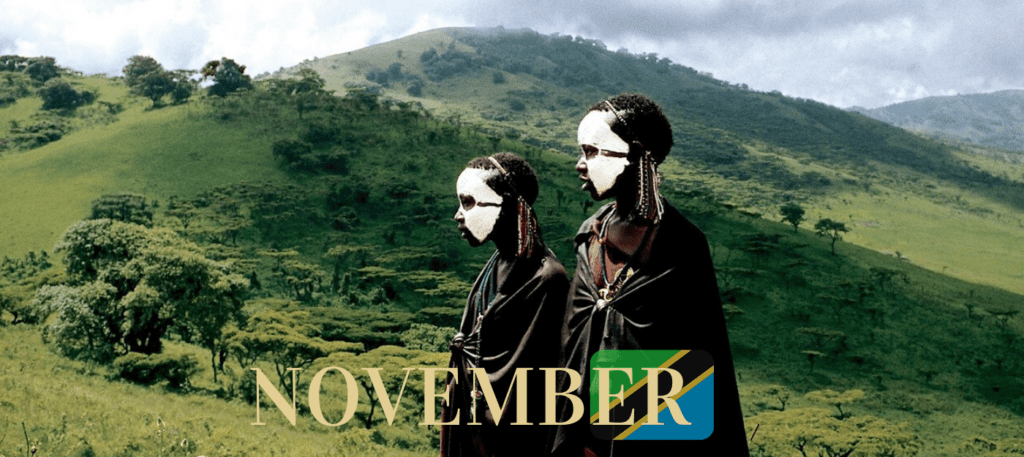
Our recommendations for NOVEMBER
- REASONABLE – Katavi National Park
- WONDERFUL – Gombe National Park — Tarangire — Lake Manyara — Selous — Serengeti — Ruaha — Zanzibar
- EXCEPTIONAL – Ngorongoro Crater
Towards the south, the rains will have a dramatic effect on the game as the wildlife disperse to take advantage of the great variety of water options.
In the north, the Great Migration continues in full swing, with the long columns of wildebeest traveling south to Ndutu.
The rain mostly falls overnight as the temperatures and humidity slowly rise. Migratory birds are now counting in the thousands and safari is good, with migrating wildebeest herds in the north traveling south to Ndutu.
There is a chance of rain, but this is generally overnight. Temperatures and humidity start to build. The festive season can be very busy and a safari at this time needs to be planned well in advance to ensure availability.
Expect Tanzania weather to run temperatures between 90 and 50oF (32 and 10oC).
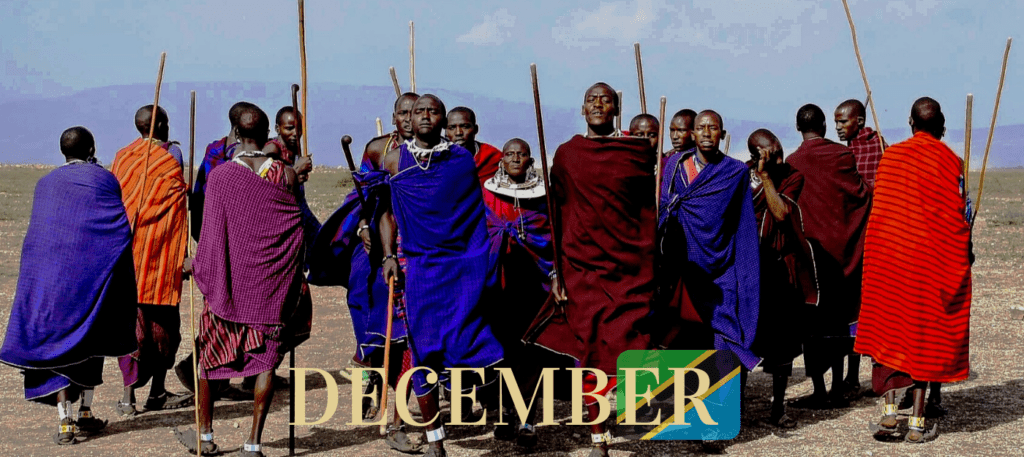
Our recommendations for DECEMBER
- REASONABLE – Gombe National Park — Tarangire — Katavi National Park
- WONDERFUL – Lake Manyara — Selous — Serengeti — Ruaha — Zanzibar
- EXCEPTIONAL – Ngorongoro Crater
The year starts warm in Tanzania and the sun comes up early for around 12 hours of sunshine. There will be little variation in sunlight hours in Tanzania throughout the year.
You can expect a touch of humidity if it rains but this is rare during January. The month marks the end of the short rains.
The bush is lush and green with migrant birds adding to the joy of ornithology. The migration is usually in the southern plains of the Serengeti and towards the end of January the three week wildebeest calving season kicks off in a flurry of adorable babies.
Keep your eyes open for cheetah in the Serengeti in January and take advantage of the good weather to experience the culture of the local inhabitants and enjoy walking safaris.
Even though the game parks of Tanzania are always busy, January is considered the shoulder season and a lot of spectacular scenery and a bit of solitude to be found.
Expect Tanzania weather to run temperatures between 90 and 50oF (32 and 10oC).

Our recommendations for JANUARY
- REASONABLE – Gombe National Park — Katavi National Park — Ruaha National Park — Selous Game Reserve — Tarangire
- WONDERFUL – Lake Manyara — Serengeti
- EXCEPTIONAL – Ngorongoro Crater
The Great Migration is usually in full calving mode in February with around half a million baby wildebeest making their entrance within the space of around three weeks around Ndutu. Tanzania, the northern circuit and a safari designed around the Serengeti and Ngorongoro is a fine plan.
The weather is hot with a good chance of rain and high humidity.
Expect Tanzania weather to run temperatures between 90 and 50oF (32 and 10oC).

Our recommendations for FEBRUARY
- REASONABLE- Gombe National Park — Katavi National Park — Ruaha National Park — Selous Game Reserve — Tarangire
- WONDERFUL – Lake Manyara — Serengeti
- EXCEPTIONAL – Ngorongoro Crater
The wet season is around the corner but the migration is in full swing boosted by all those tiny new wildebeest and the spectacular concentration of predators. The migrating herds leave Ndutu and begin to move west towards Grumeti.
The Serengeti and Ngorongoro are fabulous destinations in March and a Tanzania safari is great value during the start of the low season.
The heavy rains have not arrived but the humidity is building.
Expect Tanzania weather to run temperatures between 90 and 50oF (32 and 10oC).

Our recommendations for MARCH:
- REASONABLE – Gombe National Park — Katavi National Park — Ruaha National Park — Selous Game Reserve — Tarangire
- WONDERFUL – Lake Manyara — Serengeti
- EXCEPTIONAL – Ngorongoro Crater
In April, the glut of arrivals eases a little in Tanzania while pleasant temperatures and occasional rain can be expected. Rates are a little lower.
It is a reasonable month to visit Zanzibar as it won’t be filled with other travelers. You can wander through the lingering fragrance of spices and discover the UNESCO World Heritage site of Stone Town, the house where Freddie Mercury was born and beautiful beaches fringing turquoise water.
Expect Tanzania weather to run temperatures between 88 and 52oF (31 and 11oC).
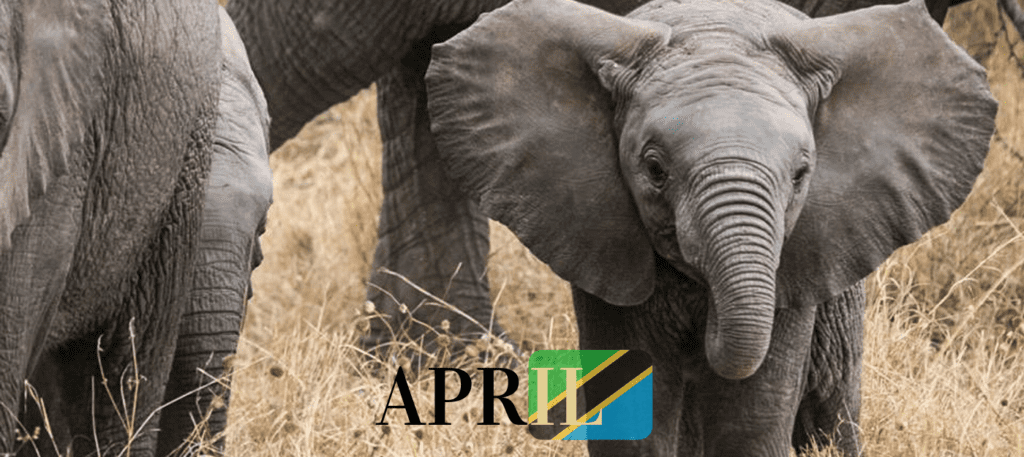
Our recommendations for APRIL:
- MEDIOCRE – Gombe National Park — Katavi National Park — Ruaha National Park — Selous Game Reserve — Tarangire
- REASONABLE – Lake Manyara — Serengeti — Tarangire— Zanzibar
- EXCEPTIONAL – Ngorongoro Crater
In the midst of the rainy season, the bush is a heavenly scene filled with all the food and water the mega herds could want. There is no guarantee from mother nature, but it is possible to have consecutive dry days and the long columns of wildebeest now begin to move into the western corridor towards the north.
As May comes to a close the dry season is a promise that most travelers are still waiting for and as the wilderness is emerald green and gorgeous this can be a heavenly time to be in Tanzania. Especially if you love photography.
Expect Tanzania weather to run temperatures between 86 and 50oF (32 and 10oC).
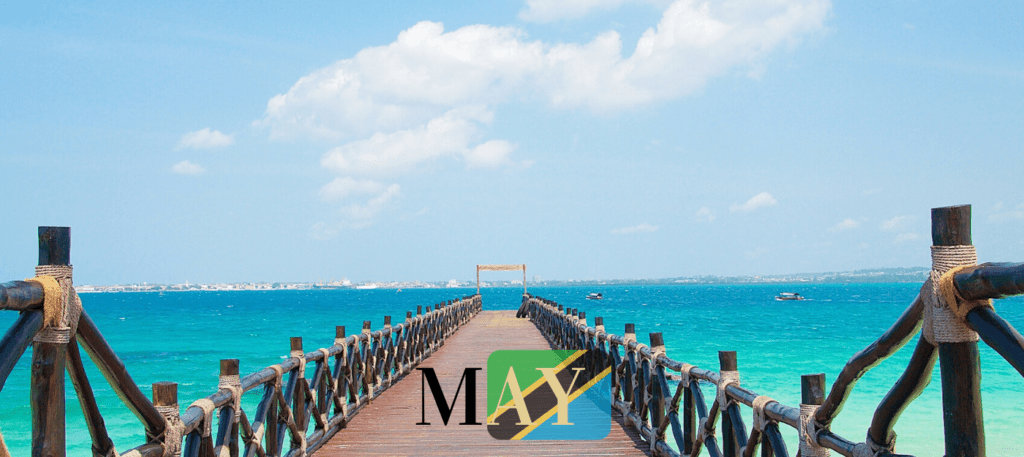
Our recommendations for MAY:
- MEDIOCRE – Katavi National Park — Zanzibar
- REASONABLE – Gombe National Park — Lake Manyara — Selous — Serengeti — Tarangire
- WONDERFUL – Ruaha
- EXCEPTIONAL – Ngorongoro Crater

